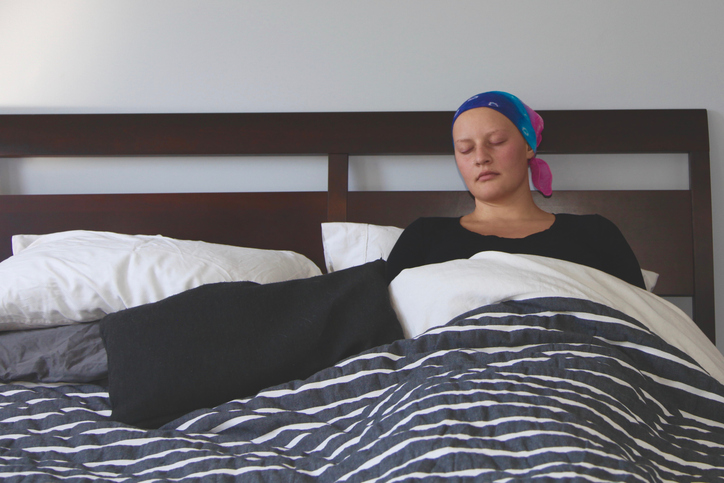By Lynda Williams, medwireNews Reporter
medwireNews: Low-dose olanzapine significantly protects against nausea and vomiting compared with placebo for women with breast cancer receiving anthracycline plus cyclophosphamide chemotherapy, show phase 3 trial findings published in The Lancet Oncology.
Recognizing that the standard 10 mg dose of olanzapine, given in combination with a 5-HT3 receptor antagonist, a NK-1 receptor antagonist and dexamethasone, is associated with “substantial daytime somnolence”, the Japanese investigators assessed the efficacy and sedation effects of a 5 mg dose in combination with the triple antiemetic regimen.
“This study uniquely investigates the timing of olanzapine administration, given within 5 h after chemotherapy administration and before the evening meal, to reduce sedation during hospital visits and transportation”, explain Mitsue Saito (Juntendo University, Tokyo) and co-authors.
Participants were undergoing treatment for stage I–III breast cancer at one of 15 cancer centres in Japan and had not previously received highly emetogenic chemotherapy. They were randomly assigned to receive oral olanzapine 5 mg (n=246) or placebo (n=234) before their evening meal on day 1, and after their evening meal on the following 3 days.
The patients also received intravenous dexamethasone 9.9 mg and palonosetron 0.75 mg before chemotherapy, either alongside a prechemotherapy dose of intravenous fosaprepitant 150 mg or oral aprepitant 125 mg on day 1 followed by 80 mg on days 2 and 3.
The median age in the olanzapine and placebo groups was 51–52 years, 59% were younger than 55 years old, and the most common chemotherapy regimens in both arms were epirubicin plus cyclophosphamide (37 vs 34%, respectively), dose-dense epirubicin plus cyclophosphamide (27 vs 32%) and doxorubicin plus cyclophosphamide (28 vs 25%).
The women were followed up for a median of 168 hours. The primary endpoint of a complete response to antiemetic treatment – defined as no vomiting or rescue medication in the 120 hours after chemotherapy administration – was achieved by 58.1% of the olanzapine-treated patients and 35.5% of controls, giving a statistically significant 22.6 percentage point difference between the groups.
And the secondary endpoints confirmed that a significant improvement in complete response occurred throughout follow-up for patients given olanzapine versus controls, specifically in hours 0–24, 24–120, 24–168 and 0–168 after receipt of chemotherapy.
Patient-reported adverse events (AEs) indicated that the most common severe or very severe symptoms in the olanzapine and placebo groups were anorexia (13 vs 38%) and constipation (12 vs 16%), while severe or very severe impairment of concentration was reported by 10% and 14% of participants, respectively.
Experimental drug-related grade 3 or 4 AEs in the olanzapine and placebo arms included somnolence (2 vs 0%) and concentration impairment (1 vs 0%).
Saito et al believe that the findings “represent a substantial advancement in managing chemotherapy-induced nausea and vomiting in patients with breast cancer and provide assurance that the safe and effective administration of olanzapine can be achieved at a dosage of 5 mg.”
They conclude that their “novel post-chemotherapy administration approach” to minimize sedation during post-chemotherapy travel could be “a new standard of care” for this patient population.
medwireNews is an independent medical news service provided by Springer Healthcare Ltd. © 2025 Springer Healthcare Ltd, part of Springer Nature
Lancet Oncol 2025; doi:10.1016/S1470-2045(25)00233-5
https://pubmed.ncbi.nlm.nih.gov/40541214
Keywords: chemotherapy, olanzapine, nausea, vomiting, sedation

